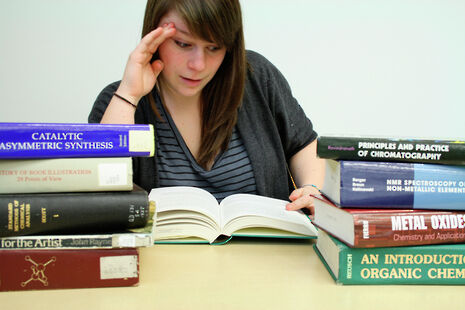Why do women still gain fewer Firsts?
Cambridge Women in Science are investigating why women perform less well

The Department of Physics is launching a study that aims to understand why men traditionally outperform women in university examinations. The project is part of the Institute of Physics’ Project Juno and the Athena SWAN Charter initiative, a national network that exists to “advance the representation of women in science, technology, engineering, medicine and mathematics”.
The study aims to investigate whether genders respond differently to questions depending on how they are phrased. Two sets of students were given the same examination paper, with candidates being led through the question in stages in one version, and the question being asked outright in the other.
Roberta Wilkinson, a first-year Natural Sciences student at Pembroke who participated in the study, said: “I think it takes a certain level of confidence to be able to approach an exam question, and particularly the more open-ended type, in which you have to have confidence in your own initiative.
“Women generally tend to be less confident in their own abilities (unsurprising in a society which is still so unequal and often doesn’t value women’s voices), and I can see this playing into how we approach exams.
“I think it’s likely this is exacerbated in subjects [like Physics] where we’re in the minority. It’ll be interesting to see the results of this study, to see if it really does make a difference.”
The study comes with the news that men at Oxbridge are awarded more Firsts than their female peers, a discrepancy that is less marked or non-existent on a national level. A look at the breakdown of first class degrees awarded to students at Oxford and Cambridge reveals that the gender discrepancy is higher at these institutions than the national average.
In the graduating class of 2013 at Cambridge, 27.7 per cent of male students were awarded Firsts, compared to just 19.7 per cent of women. The ratio is similar at Oxford: one-third of male students were awarded a First last year, compared to a quarter a female students. This discrepancy exists across most subject areas.
This is in stark contrast to the national figures. In 2012, according to figures from the Higher Education Statistics Agency, 68 per cent of female students gained a First or 2:1 degree, compared to 63 per cent of men. However, these figures do not show how many degrees were Firsts rather than upper seconds.
In the Part II Cambridge history exams last year, the number of Firsts awarded was distributed equally between men and women. However, the year group consisted of 118 female candidates compared to 86 male, and so the men received proportionally more Firsts.
Similarly, 34 per cent of men received Firsts in Part II English, compared to just 22 per cent of women.
A study published earlier this year looking into gender discrimination in science found that faculty members at US universities unwittingly showed a bias towards male applicants.
Some students have also suggested that the culture of the elite academic environment favours male students. “There’s a certain type of confidence that seems to come from being at a certain type of all-male, public school,” said a female English student quoted in The Oxford Student. “When you come to Oxford and it feels familiar, you may have a sense of belonging that isn’t accessible to everyone.”
Many students have also expressed dismay at being told by academics to “write more like a man” if they want to get a First.
 News / Police to stop searching for stolen Fitzwilliam jade17 April 2024
News / Police to stop searching for stolen Fitzwilliam jade17 April 2024 Interviews / ‘It fills you with a sense of awe’: the year abroad experience17 April 2024
Interviews / ‘It fills you with a sense of awe’: the year abroad experience17 April 2024 News / Night Climbers call for Cambridge to cut ties with Israel in new stunt15 April 2024
News / Night Climbers call for Cambridge to cut ties with Israel in new stunt15 April 2024 Sport / Kabaddi: the ancient sport which has finally arrived in Cambridge17 April 2024
Sport / Kabaddi: the ancient sport which has finally arrived in Cambridge17 April 2024 Features / Cambridge’s first Foundation Year students: where are they now?7 April 2024
Features / Cambridge’s first Foundation Year students: where are they now?7 April 2024






